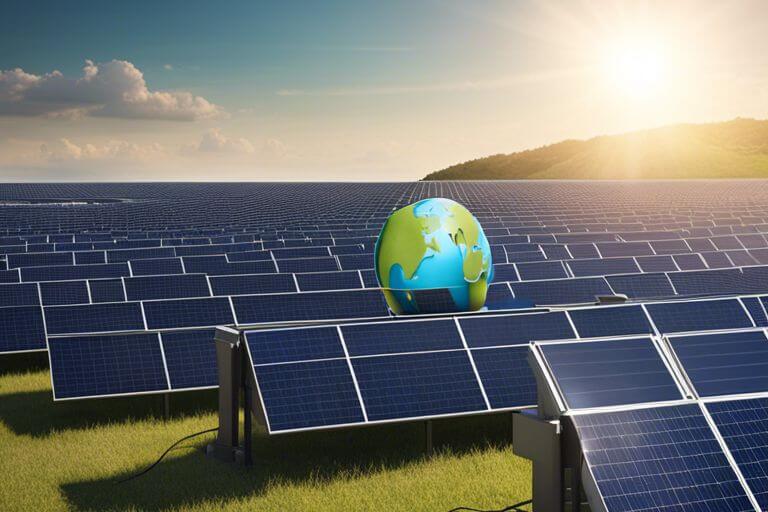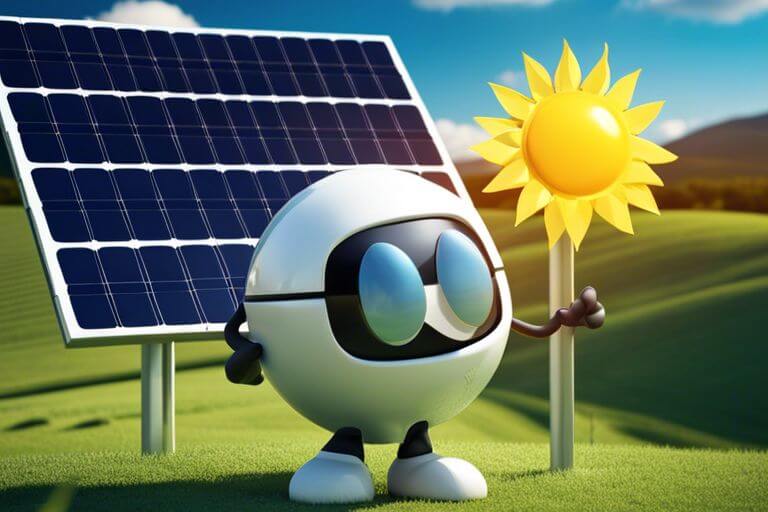Just imagine a world where your energy bills are significantly reduced, and your carbon footprint is minimized – all thanks to the power of the sun. Yet, despite these obvious advantages, the adoption of solar energy remains surprisingly low. In this article, we will examine into the reasons why solar power hasn’t yet reached its full potential in popularity and explore how this clean, renewable energy source can become a more widespread choice for you and many others.

Key Takeaways:
- Affordability: The high initial costs of installing solar panels can be a barrier for many consumers.
- Lack of awareness: Many people are not fully informed about the benefits of solar energy and the potential savings it can provide.
- Inconvenience: The process of researching, purchasing, and installing solar panels may be seen as complex and time-consuming for some individuals.

The Economic Barrier
High Upfront Costs
Barrier: Your initial investment in solar panels can be a significant hurdle. While the long-term benefits are clear, the upfront costs of purchasing and installing solar panels can be prohibitive for many households. This financial burden often deters individuals from making the switch to solar energy, despite the potential savings in the future.
Intermittent Energy Supply
High: Your concern about the intermittent nature of solar energy may also contribute to its lack of popularity. The dependence of solar power on sunlight means that energy generation fluctuates based on weather conditions and time of day. This variability can lead to doubts about the reliability of solar energy as a consistent source of power for your needs.
With advancements in energy storage technology, such as the development of efficient batteries, the issue of intermittent energy supply with solar power is being addressed. These innovations help store excess energy produced during peak sunlight hours for use during periods of low sunlight, providing a more reliable energy source for your home.
Technological Limitations
Little by little, solar energy is becoming more prevalent, but there are still several technological limitations that hinder its widespread adoption.
Energy Storage Challenges
An ongoing challenge with solar energy is the issue of storing excess energy generated during the day for use at night or during periods of low sunlight. While solar panels produce electricity when the sun is shining, this energy must be stored in batteries to ensure a continuous power supply. However, current battery technology for solar energy storage is expensive and not yet efficient enough to meet the demands of a 24/7 energy grid.
Inefficiencies in Solar Panel Technology
With solar panel technology, there are inherent inefficiencies in converting sunlight into electricity. The most commonly used silicon-based solar cells have limited efficiency rates, hovering around 15-20%. This means that a large portion of sunlight is not converted into usable electricity, leading to lower overall energy production.
The efficiency of solar panels can also decrease over time due to factors like dust accumulation, shading, and degradation of materials, further impacting their effectiveness in generating electricity.
Infrastructure and Policy
Lack of Grid Parity
Unlike traditional energy sources such as coal or natural gas, solar energy has struggled to reach grid parity, where the cost of producing solar energy is equivalent to or cheaper than traditional energy sources. This means that while solar power is clean and renewable, it is often more expensive to produce and install solar panels, making it less appealing to the average consumer.
On top of that, the infrastructure required to transmit and distribute solar energy effectively is still lacking in many regions. Without a properly developed electrical grid that can handle the intermittent nature of solar power, integrating solar energy into the existing energy system becomes a difficult and costly endeavor.
Insufficient Government Incentives
Insufficient government incentives further compound the challenges facing the widespread adoption of solar energy. In many cases, government policies have not provided enough financial support or incentives to encourage individuals and businesses to invest in solar technology.
Incentives such as tax credits, rebates, and feed-in tariffs can significantly reduce the upfront costs of installing solar panels and help generate interest in solar power. Without adequate government support, the financial barrier to entry remains high, limiting the accessibility of solar energy to the general population.
Public Perception and Awareness
Once again, when it comes to the slow uptake of solar energy, public perception and awareness play a significant role. Misconceptions and limited education about solar power can deter individuals and communities from embracing this renewable energy source fully.
Misconceptions about Solar Energy
One common misconception about solar energy is that it is unreliable and only works when the sun is shining. However, with advancements in technology, solar panels can still generate power on cloudy days or during the night. Another misconception is the upfront cost of installing solar panels, which may seem prohibitive to some. Yet, many governments offer incentives and financing options to make solar more accessible and affordable.
Limited Education and Training
One obstacle to wider solar adoption is the limited education and training available on the benefits and installation of solar energy systems. Without adequate knowledge, individuals may be hesitant to make the switch to solar power. Training programs that teach about the advantages of solar energy, the installation process, and maintenance could help address this lack of awareness.
Training in solar technology is crucial for expanding the workforce in the renewable energy sector. By providing education and hands-on training opportunities, more individuals can become skilled solar technicians, further driving the growth of the solar industry.

Environmental and Health Concerns
Keep in mind that while solar energy is renewable and clean, there are still environmental and health concerns associated with it. It’s imperative to consider these factors when weighing the pros and cons of solar power.
Land Use and Habitat Disruption
An important environmental concern with solar energy is the amount of land required for solar panel installations. Large-scale solar farms can occupy significant stretches of land, potentially leading to habitat disruption and loss of biodiversity. When considering solar energy, it’s crucial to assess the impact on local ecosystems and habitats.
Toxic Materials in Solar Panels
Health concerns related to solar energy revolve around the presence of toxic materials in solar panels. While solar panels themselves are not harmful during normal operation, the manufacturing process involves the use of hazardous substances like lead and cadmium. Proper disposal and recycling of solar panels at the end of their lifespan are crucial to prevent these toxic materials from entering the environment.
Plus, advancements in solar panel technology aim to reduce or eliminate the use of toxic materials, paving the way for even cleaner and safer solar energy systems in the future.
Competition from Other Renewables
Rise of Wind Power
The rise of wind power as a renewable energy source has presented tough competition for solar energy. Wind power has the advantage of being more predictable and consistent than solar power, as wind turbines can generate electricity day and night, regardless of weather conditions. This reliability has made wind power a popular choice for governments and businesses looking to transition to clean energy sources.
Hydroelectric Power’s Established Infrastructure
With hydroelectric power’s long-established infrastructure, it has become a formidable competitor for solar energy. Hydroelectric power plants can generate large amounts of electricity consistently, making them a reliable source of renewable energy. The extensive network of dams and power plants worldwide means that hydroelectric power is already deeply integrated into many countries’ energy systems.
Additionally, the storage capacity of hydroelectric power plants allows for the quick response to fluctuations in electricity demand, providing grid stability that solar energy systems struggle to match.
Final Words
Upon reflecting on the reasons why solar energy is not more popular, it’s crucial to acknowledge the complex interplay of factors at play. As explored in this article, issues like initial investment costs, energy storage limitations, and inadequate government incentives all contribute to the slower adoption rate of solar energy. To probe deeper into these topics, you may find it insightful to visit a thread on Reddit discussing “Why do we not run heavily on solar energy as a society or …” here.
Q: Why is solar energy not more popular?
A: There are several reasons why solar energy is not more popular. One of the main reasons is the high initial cost of installing solar panels, which can be a barrier for many homeowners and businesses. Additionally, some people may be hesitant to switch to solar energy due to a lack of awareness about its benefits and the technology involved. Another factor is the reliability of solar energy, as it may not be as consistent or dependable as traditional sources of power like coal or natural gas.
Q: How can we increase the popularity of solar energy?
A: To increase the popularity of solar energy, it is important to educate the public about the benefits of solar power, such as cost savings, sustainability, and environmental impact. Providing incentives such as tax credits, rebates, and financing options can also make solar energy more accessible and attractive to consumers. Additionally, advancements in solar technology, including improvements in efficiency and storage capabilities, can help address concerns about reliability and make solar energy a more viable option for more people.
What are some challenges facing the widespread adoption of solar energy?
A: One of the challenges facing the widespread adoption of solar energy is the need for more infrastructure to support the integration of solar power into the grid. This includes updating and expanding transmission and distribution systems to accommodate the fluctuating nature of solar energy production. Additionally, regulatory barriers, such as permitting and zoning requirements, can slow down the adoption of solar energy. Another challenge is the competition from other energy sources that may have lower upfront costs or political support, making it harder for solar energy to compete in the market.
